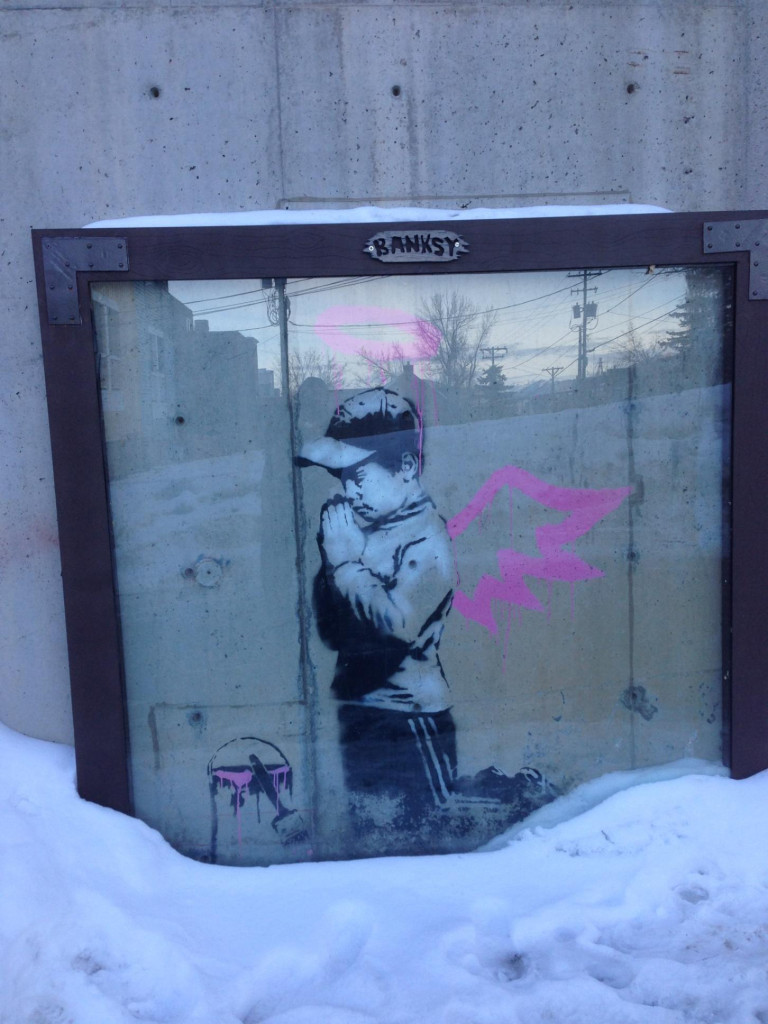 The art world watched in stunned silence as Banksy’s “Girl with Balloon” began shredding itself moments after selling for £1.04 million at Sotheby’s in 2018. While the dramatic stunt captured headlines worldwide, it also highlighted a less glamorous but equally important reality: street art’s journey from public walls to gallery spaces requires unprecedented levels of specialized handling and preservation expertise.
The art world watched in stunned silence as Banksy’s “Girl with Balloon” began shredding itself moments after selling for £1.04 million at Sotheby’s in 2018. While the dramatic stunt captured headlines worldwide, it also highlighted a less glamorous but equally important reality: street art’s journey from public walls to gallery spaces requires unprecedented levels of specialized handling and preservation expertise.
The Street-to-Gallery Evolution
Banksy’s transition from anonymous Bristol graffiti artist to auction house darling mirrors the broader acceptance of street art in commercial galleries. His “Girl with Balloon (Diptych)” carried estimates of £2.5-3.5 million at Christie’s, while his satirically titled “I can’t believe you morons actually buy this sh*t” series generated over £4.8 million in online sales. These astronomical figures represent more than market speculation—they reflect the institutional recognition of street art as serious contemporary art worthy of museum-quality care.
The technical challenges of this transition, however, extend far beyond market validation. Unlike traditional canvas paintings created in controlled studio environments, street art originates on diverse surfaces under unpredictable conditions. Banksy’s distinctive stencil technique, executed with spray paint on everything from concrete walls to metal surfaces, presents unique preservation challenges that require specialized knowledge and equipment.
The Technical Demands of Street Art Preservation
Moving street art from its original urban context to gallery walls involves complex decisions about preservation, presentation, and authenticity. Some collectors opt to remove entire wall sections—a process requiring precise cutting, structural reinforcement, and custom transportation solutions. Others work with artists to create gallery-appropriate versions, though this raises questions about authenticity that the street art community continues to debate.
The materials themselves demand specialized attention. Spray paint formulations vary significantly, and their interaction with different surface materials affects long-term stability. Climate control becomes critical, as many street art pieces were never intended for indoor environments. Storage requirements often exceed those of traditional artworks, particularly when dealing with architectural elements or oversized installations.
Professional art handling companies must understand not only the technical aspects of preservation but also the cultural context that gives street art its power. The challenge lies in maintaining the work’s raw energy and social commentary while ensuring its physical longevity for future generations.
Preserving a Banksy street piece
Meeting the Demand for Specialized Services
As street art continues gaining recognition in major auction houses and contemporary galleries, cities with thriving art scenes require infrastructure to support this growing market. Dubai’s emergence as a regional art hub exemplifies this trend, with contemporary galleries in districts like Alserkal Avenue regularly featuring street art and urban contemporary works.
This demand has created opportunities for specialized art handling companies like Dubai Fine Arts, which provides professional installation, storage, and transportation services for contemporary works throughout the UAE. Their expertise in handling diverse contemporary pieces—from traditional paintings to large-scale installations—reflects the kind of specialized knowledge required when prestigious galleries and collectors invest in street art pieces.
The Future of Street Art in Institutional Spaces
The integration of street art into traditional art market structures continues evolving. Museums worldwide now regularly feature street art exhibitions, while private collectors increasingly view authenticated pieces as serious investments. This institutional acceptance creates ongoing demand for professional services that can bridge the gap between street art’s rebellious origins and its gallery destinations.
As Banksy’s market continues breaking records and inspiring new generations of street artists, the infrastructure supporting this transition becomes increasingly sophisticated. The successful preservation and presentation of street art requires not just understanding its aesthetic value, but respecting the technical demands that make its gallery transition possible.
The shredding of “Girl with Balloon” may have been Banksy’s commentary on art market commodification, but it also demonstrated something else: even the most subversive art benefits from professional handling when the stakes are this high.
